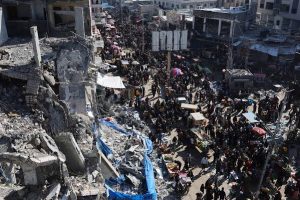Mahakumbh 2025 showcases the double-engine government’s commitment to heritage and development. In line with this vision, Indian Railways is leaving no stone unturned to ensure seamless travel for pilgrims through efficient crowd management and a record number of fair-special trains.
Adding to the grandeur, a railway exhibition in the Mahakumbh fair area is offering visitors a glimpse into India’s railway heritage and future advancements.
The exhibition features models of Chenab and Pamban bridges, while also educating the public about next-generation trains like Namo Bharat, Amrit Bharat, and Vande Bharat sleeper trains.
Additionally, displays highlight the historical contributions of Indian Railways in wars and other significant national events.
Indian Railways is not just the backbone of the country’s transportation network but also serves as a unifying force, weaving together India’s rich cultural diversity. Stretching from Kashmir to Kanyakumari and Gujarat to Arunachal Pradesh, it plays a crucial role in connecting the nation.
Beyond transportation, Indian Railways is a key carrier of India’s heritage and the development vision of the double-engine government, a theme showcased in the railway exhibition at Mahakumbh.
Railway officials here on Monday said the exhibition, held in Sector-1 of the Mahakumbh Mela area, features models of the Chenab and Pamban bridges, built using the latest indigenous technology. The Chenab Bridge in Jammu and Kashmir, the world’s highest railway bridge, stands at 359 meters above the riverbed—35 meters taller than the Eiffel Tower in France.
Meanwhile, the Pamban Bridge, linking Rameswaram, is India’s first sea rail bridge with a fully automated vertical lift span, also featured in the exhibition.
The Indian Railways exhibition highlights the advanced trains introduced under the Modi government, including the Amrit Bharat, Namo Bharat, and Vande Bharat Sleeper trains. The Amrit Bharat is a superfast express train, while Namo Bharat is India’s first EMU train, capable of covering the distance from Meerut to Ashok Nagar in just 40 minutes.
The exhibition also showcases the role of Indian Railways during 1965, 1971, and Kargil wars, emphasising its critical contributions in times of national need. Additionally, it provides insights into the initiatives of the double-engine government that have enhanced railway accessibility for devotees traveling to pilgrimage sites of the Sanatan faith.
To facilitate pilgrims during Mahakumbh, Indian Railways has set up temporary ticket counters, enquiry rooms with electronic display boards, and multilingual announcement systems, all of which are prominently featured in the exhibition.
Advertisement
















